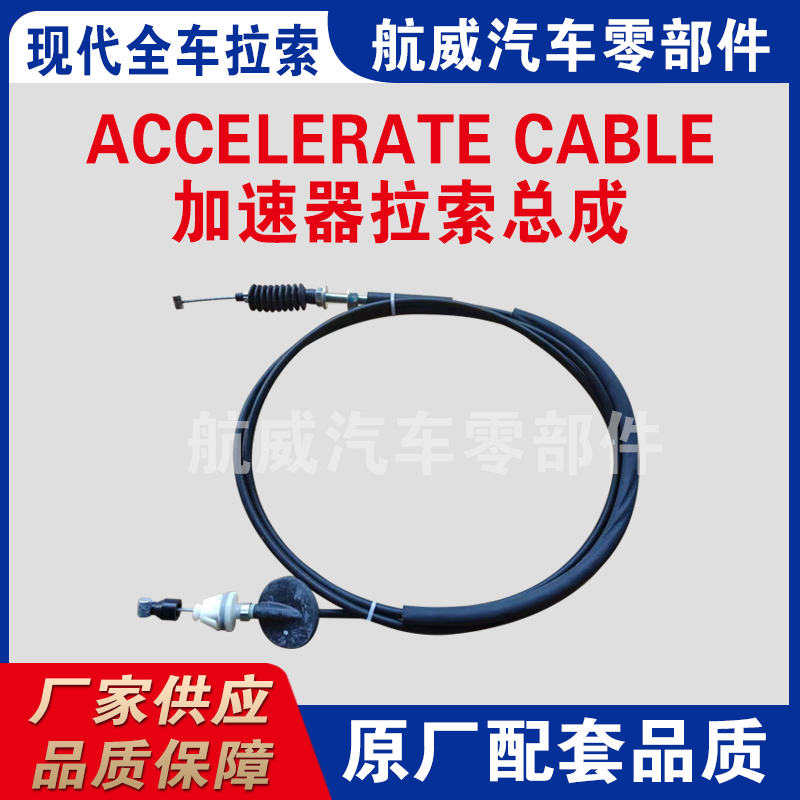Design and Functionality of Push-Pull Throttle Mechanisms in Automotive Applications
The Push-Pull Throttle Assembly An Overview
In various engineering and mechanical applications, the throttle system plays a critical role in regulating the power output of an engine, particularly in vehicles and machinery that require precise control over speed and performance. Among the different types of throttle systems, push-pull throttle assemblies stand out for their mechanical simplicity and reliability.
Basic Concept
A push-pull throttle assembly primarily consists of two main components a throttle body and an actuator. The throttle body is connected to the engine’s air intake, while the actuator is responsible for opening and closing a butterfly valve within the throttle body. This valve controls the airflow into the engine, thereby regulating its power output. The unique push-pull mechanism utilizes a cable or rod system that allows for smooth operation and quick response times.
Mechanism of Operation
The term push-pull refers to the dual action involved in operating the throttle. When the driver accelerates, they can either push or pull on the throttle control—traditionally a pedal or a lever. This action engages the throttle cable connected to the throttle body, allowing it to open and close the butterfly valve in response to the driver’s input. The push movement typically opens the valve, allowing more air into the engine, thereby increasing power and speed. Conversely, pulling back the throttle reduces airflow, allowing the engine to decelerate.
This dual action provides an intuitive interface for operators, making it easier to control vehicle performance. Whether in a car, a motorcycle, or a piece of industrial machinery, the push-pull method allows operators to make fine adjustments to speed and torque as needed.
Applications
Push-pull throttle assemblies find application across a wide range of vehicles and machinery. In the automotive industry, they are prevalent in both manual and automatic transmission systems. For motorcycles and ATVs, the push-pull throttle is crucial for delivering precise power delivery, allowing riders to maneuver effectively in various terrains.
push pull throttle assembly

In addition to consumer applications, push-pull throttle assemblies are utilized in aerospace and marine engineering. Aircraft use similar throttle systems to control engine power for optimal takeoff and landing performance. In marine applications, outboard motors often employ push-pull systems, providing boat operators with precise throttle control for a smooth ride on the water.
Advantages
One of the significant advantages of push-pull throttle assemblies is their mechanical simplicity. Fewer components mean less chance of failure, making them highly reliable. They require minimal maintenance compared to electronic throttle control systems that use sensors and actuators, which can be more complex and prone to malfunctions.
Additionally, push-pull systems provide instant feedback to the operator. This immediacy enhances the driving experience, as operators can feel directly connected to their vehicle's performance. In competitive settings, such as motorsports, this feedback can be the difference between winning and losing.
Limitations
Despite their advantages, push-pull throttle assemblies are not without limitations. One challenge is the physical space required to accommodate cables and linkages, which can be a concern in compact engine bays. Moreover, while they are reliable under most conditions, they may not provide the same level of precision as modern electronic throttle control systems, particularly in situations that require fine-tuned adjustments.
Conclusion
The push-pull throttle assembly remains a fundamental technology in the field of mechanical engineering. Its simplistic design combined with its effectiveness in controlling engine performance ensures that it will continue to play a crucial role in various applications. As engineering advances, modern technologies may evolve or replace some systems, but the foundational principles of the push-pull throttle will endure, providing reliability and performance that engineers and operators trust.
In a world increasingly dominated by electronic systems, the push-pull throttle assembly stands as a testament to the efficacy of straightforward, mechanical solutions—a reminder that sometimes, the simplest designs can deliver the most powerful results.
-
Workings of Clutch Pipe and Hose SystemsNewsJun.04,2025
-
The Inner Workings of Hand Brake Cable SystemsNewsJun.04,2025
-
The Secrets of Throttle and Accelerator CablesNewsJun.04,2025
-
The Hidden Lifeline of Your Transmission Gear Shift CablesNewsJun.04,2025
-
Demystifying Gear Cables and Shift LinkagesNewsJun.04,2025
-
Decoding Clutch Line Systems A Comprehensive GuideNewsJun.04,2025
